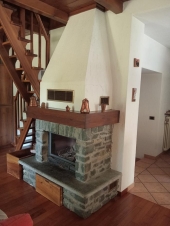The design began by looking for solutions to the constraints I had identified. Here are some questions I found answered on permies:
webpage
The combustion unit is 190 cm shorty, the size of the system is tied to the existing chimney (rectangular 15x30 cm), It was not possible to replace it or move it from its position without heavy demolition work.
Project continues with the design 3D on sketchup. The advice we received was fundamental, both regarding the materials and the arrangement of the various elements.











